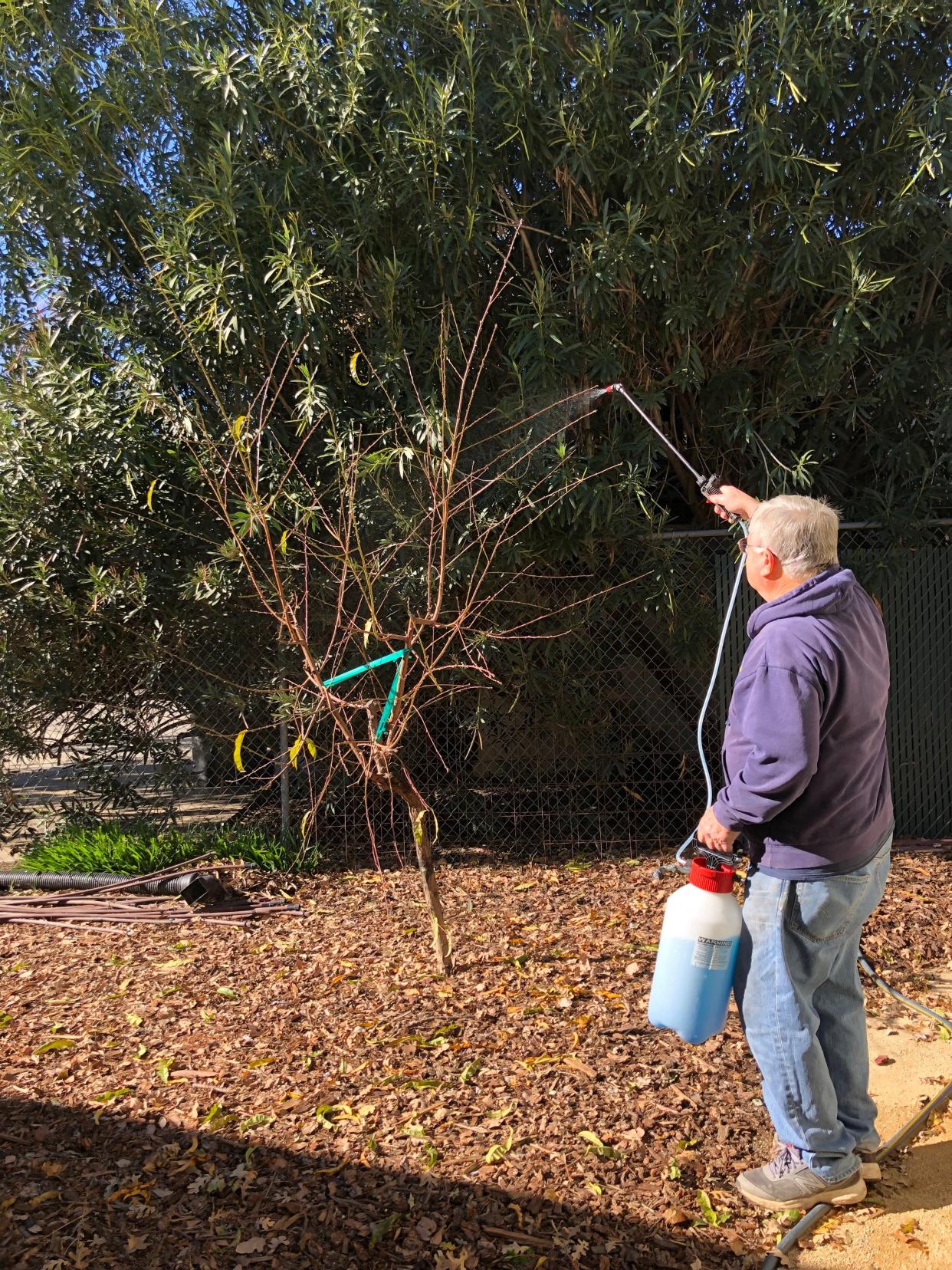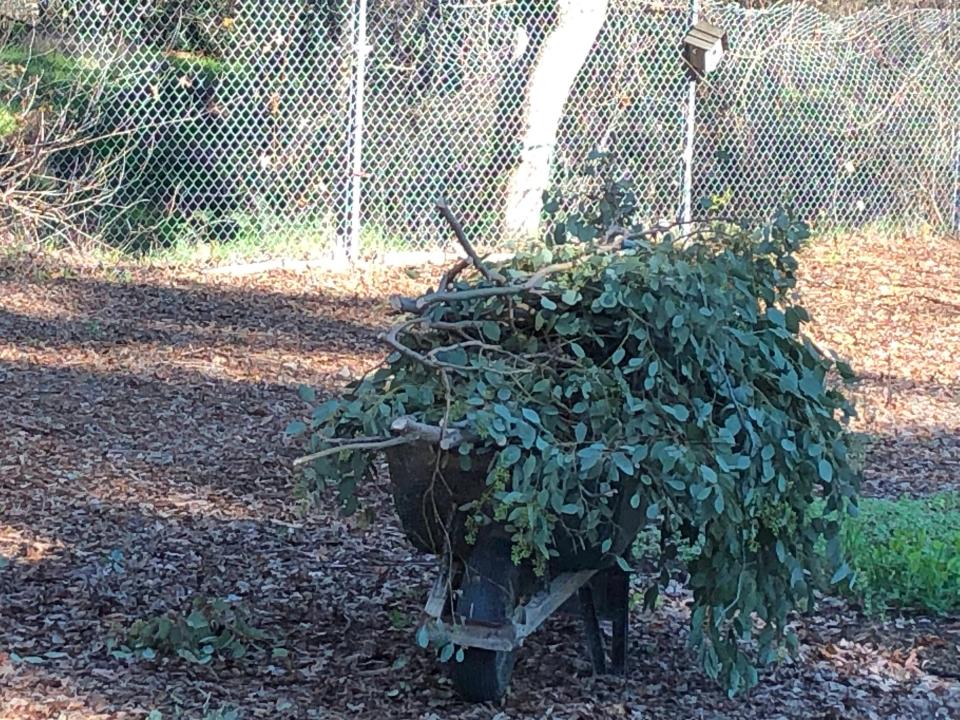Tips and tasks from January’s IPM checklist for Northern San Joaquin Valley gardeners

If you haven’t subscribed to the University of California Integrated Pest Management regional online checklist tool, now is a good time to make a new year’s resolution to take advantage of this free, timely monthly reminder.
Go to bit.ly/3nLyAzw for the Seasonal Landscape IPM Checklist / UC IPM: Home, garden, turf and landscape (ucanr.edu), check the box for the region you are considering, and add your email address to their subscribe function. Easy peasy! Monthly reminders will follow.
They also have a “print friendly” formatting tab, which is an easy way to print and keep handy in a binder. The online version is also hyperlinked to fact sheets published by the University of California, making research and more information effortless.
From the January, “Northern San Joaquin Valley” checklist:
Abiotic disorders: Or disorders caused by nonliving factors, such as winter freeze injuries, summer drought, wind damage, chemical injury, overwatering or under watering, etc. “Prevent or manage damage.”
Asian citrus psyllid: Inspect your citrus trees for Asian citrus psyllid and Huanglongbing Disease Management Guidelines — UC IPM (ucanr.edu) “Look for it and if found where not known to occur report it,” 1-800-491-1899, ”and (any) other new or exotic pests to your local county agricultural commissioner.” A good video to watch explaining how to find the insect is "Detecting Asian citrus psyllid:" youtu.be/QhQXL4bwnXI
Compost: “Turn and keep it moist. Cover during rainy weather if needed to avoid sogginess.” While you are at it, cover any piles of soil you may have around your garden, to prevent erosion.
Dormant controls: Pests in Gardens and Landscapes: Dormant or delayed-dormant season controls — UC IPM (ucanr.edu) “Continue rainy-season prevention of diseases, earwigs, snails and slugs, and weeds. Implement disease and insect control for apple, pear, stone fruits, nut trees, and deciduous landscape trees and shrubs such as roses.
Clean up mummies and old fruit in and under trees.
Remove fallen leaves from beneath deciduous fruit trees and roses.
Prune off dead, diseased, and borer-infested wood.”
Frost: Pay attention to temperatures and “protect sensitive plants from cold injury when freezing or frost are predicted.” Lightweight, poly spun row cover works well on leafy winter veggies, or other sensitive plants.
Irrigation: All irrigation water should be turned off. “Adjust watering schedules according to the weather and plants' changing need for water. Reduce irrigation frequency or turn off systems if rainfall is adequate.” Rainfall has been adequate!

Mistletoe: Mistletoe — UC IPM (ucanr.edu) “Mistletoes are parasitic plants that absorb both water and nutrients from a host tree. Healthy trees can tolerate a few branches infected with mistletoe. However, if the infestation is severe, trees can weaken, have stunted growth or dead branches, or die completely. Prune off infected branches.”
Olive knot and oleander gall, or knot: Avoid pruning olive and oleander during wet weather if stem galls are a problem.
Peach leaf curl: “Apply preventive spray once or more during late fall through bud break if leaf curl has been a problem on nectarine or peach.” Spraying once around Thanksgiving and again just after New Year’s is a good rule of thumb.
Pine bark beetles, pitch moths, western gall rust, and wood borers: “If pines need branch removal, prune during October through January.”
Plant bare root deciduous trees, shrubs, and vines e.g.: Landscape Trees, Shrubs & Perennial Vines — The California Garden Web (ucanr.edu) “caneberries, fruit and nuts, grapes, and roses. Plant seedlings of cedar, fir, pine, and spruce. Select species and cultivars well-adapted to the local site.”
Prune deciduous trees and shrubs: Pests in Gardens and Landscapes: Pruning fruit and shade trees and shrubs — UC IPM (ucanr.edu) “such as apple, crape myrtle, pear, rose, spirea, and stone fruits. Make cuts properly to encourage good form and structure. Remove dead, diseased, and borer-infested wood. Certain pests (e.g. shot hole borer) and host plants such as apricot and cherry warrant summer pruning.”

Root rot: “Phytophthora cinnamomi and other Phytophthora spp. commonly cause maladies that are also called collar rots, foot rots, and Phytophthora root rot. These fungus- like water molds (Oomycetes) affect many plant species. Phytophthora ramorum infects aboveground plant parts and causes sudden oak death and Ramorum blight.” “Favored by excessive water and poor drainage. Avoid over irrigation and waterlogged soil.”
Sycamore scale: "Sycamore scale, Sycamore Scale Management Guidelines — UC IPM (ucanr.edu), … is the most damaging insect pest of these trees in California.”
If you have gardening questions, contact the Master Gardeners at (209) 953-6112 or visit our website at ucanr.edu/sjmg.
This article originally appeared on The Record: Garden tips: January’s pest management checklist for San Joaquin Valley

